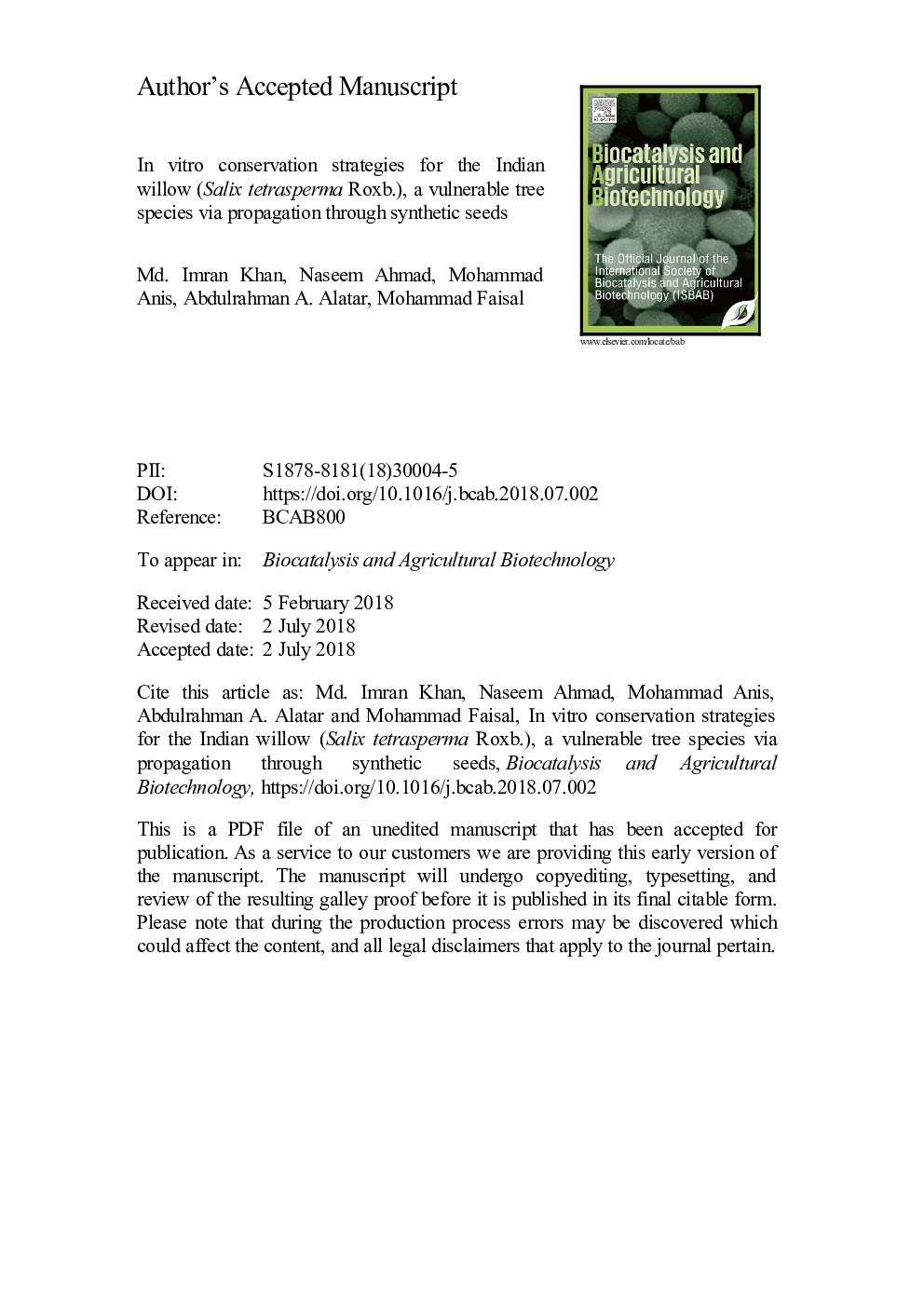| Article ID | Journal | Published Year | Pages | File Type |
|---|---|---|---|---|
| 8405522 | Biocatalysis and Agricultural Biotechnology | 2018 | 15 Pages |
Abstract
Non-embryogenic, synthetic seeds were produced by encapsulating nodal segments (containing axillary buds) of Salix tetrasperma in calcium hydrogel containing Woody Plant medium (WPM). A 3% (w/v) sodium-alginate with 100â¯mM calcium chloride was found to be optimum concentration for the production of uniform synthetic seeds. The synseeds survived cold storage at 4â¯Â°C for a maximum period of 8 weeks. The maximum frequency (71%) of conversion of encapsulated beads into plantlets was achieved on a medium composed of WPM containing 2.5â¯ÂµM Kinetin (Kin) and 0.5â¯ÂµM α-naphthalene acetic acid (NAA) after 4 weeks of culture. Rooting in shootlets was recorded on half strength WPM supplemented with 0.5â¯ÂµM indole-3-butyric acid (IBA). Plantlets obtained from stored synthetic seeds were hardened, acclimatized and established in field where they grew well without any detectable malformation. The generated RAPD profiles from regenerated plantlets and mother plant were monomorphic which confirms the genetic stability among the clones. The synthetic seed technology could possibly paves the way for short term storage, germplasm conservation exchange for improvement and an alternative clonal propagation method for elite genotypes of Indian willow.
Related Topics
Life Sciences
Agricultural and Biological Sciences
Agricultural and Biological Sciences (General)
Authors
Md. Imran Khan, Naseem Ahmad, Mohammad Anis, Abdulrahman A. Alatar, Mohammad Faisal,
